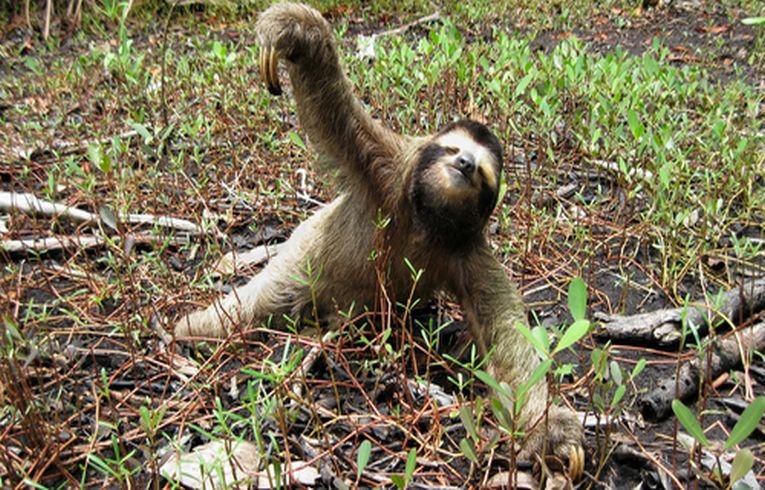We have always been fascinated with the sloth and its relatives, so a paper investigating the aquatic versions is very welcome. Eli Amson of Sorbonne Universites and her colleagues presents their results in the document - Gradual adaptation of bone structure to aquatic lifestyle in extinct sloths from Peru.
All of the marine vertebrates tend to densify their bone in a kind of osteoclerosis that helps adapt to aquatic life. Dugongs do it and even educated cetaceans do it! The result is a ballast-like effect, to counteract the buoyancy of enlarged lungs. The Sirenia and the whales have the most fossil species that clearly adapted in this way at a very early stage in their evolution. Among the data on these animals, the aquatic sloth genus of Thalassocnus has 5 species dating from the Late Miocene to the Late Pliocene.
The sloths' group of xenarthrans include 6 sloths, anteaters and armadillos, but Thalassocnus was unique in specialising in marine vegetation. At 8, 7, 6 and 5 million years old, the oldest species were dated conveniently to test the theory of increasing bone density (measured as an increase in rib compactness) as aquatic life-styles adapted the animals to their niches. It is interesting to compare them to non-aquatic relatives such as the living anteaters and sloths.
Thalassocnus antiquus is confirmed here as a sister group to all the other fossil species that is itself related to the older Hapalops spp.. The increase in bone compactness was proved to go beyond the ribs and include all of the limb bones. The rear limbs had lost the normal bone medullary cavity completely in the last 2 species in the sequence, providing strong evidence of increasing adaptation. The early whales were very similar in their fossil adaptations. But what about living sloths and anteaters?
Several terrestrial sloths have compact bones. This indicates that the aquatic species of sloth may have already had similar bone in an example of "exaption," or being pre-adapted for a special habitat. It's debateable whether the aquatic niches constitute a cause of the bone development or an effect. Whatever happened, the Peruvian coastline in the Neogene Period (20 million years that included the Miocene and the Pliocene) was desertified, leading to a great incentive for species to adapt to marine herbivore niches. Current living sloths are equally well adapted to their apparently wobbly terrestrial situations, hopefully maintained and conserved successfully, unlike one quite recent extinction, several thousand years ago.










